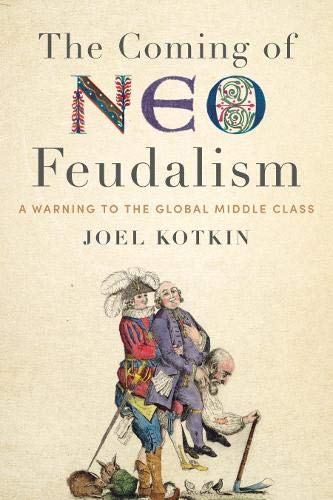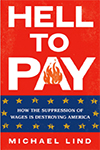
Developer Shaheen Sadeghi’s vision of an artisanal, small-business-driven economy seems oddly incompatible with his environment. After all, Orange County, Calif., where the 71-year-old Sadeghi has worked for four decades, bristles with mass-produced fabrication. Home to several of the nation’s most successful malls and endless shopping centers, the region has incubated such firms as McDonald’s, Jack in the Box, Cheesecake Factory, Marie Callender’s, Taco Bell, and the epicenter of faux American conformism, Disneyland.
Yet walking around his expanding development, called the Camp, it’s clear Sadeghi has made his vision real. Located on four acres in Costa Mesa — just one mile from the South Coast Plaza — one of the most successful mega-malls in the country — is a collection filled with dozens of independent, small businesses including oddball boutiques, diverse independent restaurants, and even a bar — Cowboy and Poodles — that celebrates southern California’s cowboy heritage, with Western images and artifacts matched with kitschy images of well-groomed dogs.
“Most of retail may be dying,” Sadeghi notes, “the next generation of customers won’t go to the big stores but are seeking out a direct human experience.” Moreover: “The traditional middleman role is obsolete. People may go online to buy necessities but when they go out to shop, they want something real, something that offers the possibility of serendipity.”
Sadeghi, who grew up in Michigan, is the child of Muslim Iranian immigrants. He graduated from Brooklyn’s Pratt Institute and worked in the surf-wear industry — eventually running Huntington Beach–based Quiksilver — for a decade until he came up with his concept of “the anti-mall” in 1993. His LAB company, which stands for “Little American Business,” has some 40 projects spread across the county. For many young residents, including my daughters, the Camp and Anaheim’s Packing House (both LAB developments) replaced the conventional mall as their preferred place to hang.
Sadeghi says he believes that his developments tap an unmet demand for personal, unique experiences and, most of all, human interaction. “The rise of artificial intelligence and virtual reality, a world of robots, suggests we don’t need to interface with people,” he says over lunch at Aba, a crowded and popular Israeli restaurant at the Camp. “But people need more than that. They want that personal experience, the unexpected. Providing that is what excites me.”
The notion of an artisan economy may seem odd in an age dominated by online sales and artificial intelligence. Yet, as Sadeghi points out, this is the opportunity. As we buy routine, depersonalized products online or at a mega retailers such as Target or Costco, there remains a desire for something more human. We seek to connect more closely to the farmer, the maker of products, and to products sourced close to the community.
This counterfactual development can be seen in such things as the rapid growth of flea markets, farmers’ markets, and that ultimate symbol of grassroots free markets, garage sales. The 2000s and 2010s saw the growth of the “buy local” movement and the rapid expansion of farmers’ markets in the U.S. — from fewer than 1,800 in the mid-1990s to more than 8,770 by 2019. Flea markets have also proliferated around the world, growing at 4.5 percent a year. By 2033, U.S. flea market sales are expected to grow from $12.5 billion to almost $17.5 billion. Similar growth is projected in Latin America, Europe, and Asia.
The shift is reflected as well in surging yard sales. A July survey by Morning Consult found that about half of U.S. consumers said they have shopped secondhand, and a quarter said they sold something secondhand within the previous three months. According to a recent report from online resale shop ThredUp and the retail analytics firm Global Data, the U.S. market for secondhand apparel grew by 14 percent in 2024, its strongest annual growth since 2021, and is expected to hit $74 billion by 2029.
The roots of this shift are both psychological and technological. In a digital age, when direct human contact is increasingly optional, there remains a clear market for originality and serendipity. At a yard sale or farmers’ market, you never quite know what you will find and how much it might cost. “It’s an experience that AI cannot do,” notes Randy Hild, another surf-wear executive whose Redo Market runs flea markets throughout Southern California.
“There’s something even for surfers who like something old,” he suggests. People like to buy the older American-made products featured in Hild’s “redo markets” that sell vintage records, surfboards, and all sorts of memorabilia. Hild runs two shows a year, each one visited by upwards of 15,000 people.
The attraction of artisan firms, which produce their own products, is an alternative often lost in the era of Yelp, online ordering, and “bucket list” consumerism. As the recently retired New York Times food critic Pete Wells notes, even some more elite restaurants — much like the numerous chains that have closed stores, or entirely — have become formulaic and not really interested in cultivating relationships, something that artisanal smaller businesses, without the ability to afford expensive advertising, depend on to find customers. He observes:
It’s not that we don’t want to have relationships with the owners and cooks and baristas in our lives. Tiny pop-up restaurants and micro-bakeries are still riding a wave of popularity that started during the pandemic. A large part of the appeal of these places is the chance to meet the person who baked the croissant or cooked your Vietnamese bun cha.
One can see the market for the (genuinely) personal touch throughout Southern California. These small businesses are located in the ubiquitous strip centers detested by urban planners and new urbanists that are faring far better economically than is often assumed. There you can experience a wide range of choices, from sari shops to thriving Laotian, Cambodian, Vietnamese, and Mexican shops.
Such developments, anchored by small, local businesses, are spread throughout the region, notably in working-class Latino cities, usually occupying deserted big-box or retail spaces. Larger developments tend to be in redundant warehouse spaces, such as Sadeghi’s Camp. Others rise adjacent to supermarkets. For example, the Latino-themed Mercado, located next to the Gonzalez family–owned Northgate market, features more than 20 stalls covering 11,361 square feet and offers a wide diversity of Mexican food from largely independently owned stalls.
It’s ironic that these innovations are taking place in supposedly homogeneous suburbia, even as many cities have become inundated with chain stores. “This is not suburbanization but localization,” suggests Sadeghi. Many suburbanites, he notes, left the big city but did not have their taste buds removed at the same time. “Suburbia is no longer bland,” he notes. “Orange County is local like New York and L.A. are local.”
Wherever it is located, artisanal business appeals to deep-seated public sentiment. Big companies, banks, and media receive low marks from the public, but small business continues to enjoy widespread support across party lines. Self-employment has grown somewhat faster, at least until recently, than regular employment, especially among skilled professionals like plumbers, electricians, and those who work in food service and management. Since 2020, the number of self-employed people has jumped by nearly 2 million. The largest percentage of these new businesses are in retail, but many others are in tech, professional services, and construction, all populated by the new artisanal class.
Europe has not experienced a similar entrepreneurial explosion but has retained much of its traditional artisan economy. Surveys reveal that more than 70 percent of EU citizens consider the origin of food products important, with a significant portion expressing a willingness to pay more for locally sourced goods that they perceive as fresher and more trustworthy.
In America, post-globalism appeals to the progressive left as well as to the MAGA right. It also could become a key source of new employment, particularly in the era of artificial intelligence. Public companies have been slashing white-collar staff since 2022 by more than 3.5 percent a year, with the most precipitous drops in executive and management positions. The once-booming idea of “career” training faces a reality where some CEOs, like Ford’s Jim Farley, now predict that “literally one half of white collar jobs” at major corporations will soon be redundant.
For many young people, artisan skills training offers a more promising alternative. Indeed, one recent survey found that roughly 83 percent of Gen Z feel that learning a skilled trade can be a better pathway to economic security than college — including 90 percent of those who already hold college degrees. By fall 2021, total undergraduate enrollment was 15 percent lower than it was in fall 2010. In contrast, trade schools have grown by 10 percent since 2020. Coders may be systematically culled by artificial intelligence, but there has been steady growth among those who can actually build something — whether as skilled tradespeople or as industrial, chemical, or civil engineers, reflecting a shift among tech investors and CEOs toward the production of goods as opposed to bytes.
Of course, some economic functions, particularly those dependent on low wages, will never likely return to the U.S., but there’s clearly some decline in support for and in the viability of globalist mass production. Some of this can be traced to mercantilism (particularly from China) and ever more stressed supply chains and shipping lanes. These, as analyst Peter Zeihan suggests, are undermining what he calls the globalized order, forcing production back toward the consumers.
New technology, traditionally the bane of small firms, also makes local, small-scale production easier. The spread of affordable digital manufacturing tools — 3D printers, CNC machines, and other artisanal technologies — enables microenterprises to design, produce, and sell locally, reducing reliance on long supply chains. E-commerce platforms like Etsy, Shopify, and Alibaba have democratized access to markets, allowing millions to start businesses with minimal capital and fostering direct competition.
These innovations allow craft entrepreneurs to create a vibrant ecosystem of small-scale production, sometimes using robots, where competition thrives on creativity, quality, and direct connection with consumers rather than just economies of scale. This is next on Sadeghi’s list. Over the past five years — thanks to slow permitting in California — he has been putting together a 100,000-square-foot artisanal center in San Marcos, an exurb of San Diego, with room for 50 vendors.
Sadeghi is excited by the emergence symbolized by the opening of the first MIT Fab Lab in 2002 — which offers tools and skills that once belonged only to large manufacturers. By the late 2010s, more than 1,600 Fab Labs were operating globally, with hundreds in North America. This could provide new life in both the U.S. and Europe, where the embedded artisan tradition — deeply rooted in family businesses, regional craft, and protected appellations — has shown greater resilience than the continent’s large firms in the face of globalizing pressures. Southern Europe (Italy, Spain, and France) maintained dense webs of artisanal food producers and small manufacturing firms. In Italy, artisan businesses accounted for 27 percent of all firms as recently as 2018.
This pattern is even emerging in East Asia, the region that has most benefited from the globalist era. Japan has protected traditional crafts and small producers through a blend of national policy and local initiative. The One Village, One Product movement, which began in Ōita Prefecture in 1979, had by the 2010s spread nationwide and inspired similar efforts in Thailand and China. Taobao villages, clusters of entrepreneurs leveraging Alibaba’s online platform, became a model for rural regeneration, with more than 5,000 such villages by 2020.
In Africa, the drive to artisanal production grows not so much from lifestyle considerations but from the failure of state policy and the resilience of individual agency. In South Africa, the continent’s most advanced economy, these firms have helped provide services, including security, that the central government has failed to deliver. By 2023, some 2.7 million small businesses operated in the country, two-thirds in the informal sector, employing more than 9 million people. Across sub-Saharan Africa, informality is not an exception but the rule: 80 to 90 percent of employment in Nigeria, Kenya, Ghana, and elsewhere is outside the formal economy.
It’s a long way from Africa’s villages or rural Japan to Southern California, but the trend toward the artisan economy continues.
Some urban planners, like San Juan Capistrano’s development services chief, Joel Rojas, realize that whatever their efficiencies, chain-driven development does little to enhance a city’s uniqueness or sense of community. In a world full of duplicate stores, he notes, it is key for a city to project uniqueness of feel and experience.
This is why he has worked hard to allow for the development of the River Street Marketplace, which opened last year. “It’s a community asset, not a mall,” Rojas suggests, as we picnicked in its ample open area, which was crowded with young families. He particularly appreciates the walk’s agrarian look — which includes barnlike structures — as well as its location near an operating farmstead.
The marketplace, developed by Dan Almquist (who owns several other artisan-based centers), features butcher shops, quirky fashion outlets, and ethnic food stands. Located next to the city’s unique Los Rios district, its buildings are purposely reminiscent of Orange County’s agricultural past. It is built around a mission and California’s oldest continually urban area, occupied since Spanish times.
“People come here for an artisan experience, dealing with real things, not spending their time staring at a computer,” notes Almquist, who lives walking distance from the development. This is one way to get away from isolation and enjoy a community feeling. Two-thirds of the stores in his development are either stand-alone or locally based small chains.
The artisan economy will never fully replace the large global system, even as this slowly dissembles into regional or national economies. But arguably its greatest service may be in helping to reshape perceptions of capitalism. Today, our market system is not much-loved globally and even in the U.S., particularly among the young.
The tendency to identify capitalism primarily with numbing commercial sameness and with the antics of the ultrarich and famous does not do it any favors. Small businesses, like those arising in the artisan movement, validate capitalism’s dynamism and sense of opportunity. Indeed, Vladimir Lenin well understood that “small scale commercial production is, every moment of every day, giving birth spontaneously to capitalism and the bourgeoisie. . . . Wherever there is business and freedom of trade, capitalism appears.” Capitalism, he noted, “begins in the village marketplace.”
This is an important message. The return of the owner and the producer to the marketplace breathes life — not just in monetary terms — and essentiality into community and social life. A buffer against both the progressive nanny state and overwhelmingly conformist global capitalism, the rise of the artisan restores the human face of the market system. Capitalism can still perform brilliantly, but it cannot long survive if its essential humanity is stripped away.
This piece first appeared at National Review.
Joel Kotkin is the author of The Coming of Neo-Feudalism: A Warning to the Global Middle Class. He is the Roger Hobbs Presidential Fellow in Urban Futures at Chapman University and and directs the Center for Demographics and Policy there. He is Senior Research Fellow at the Civitas Institute at the University of Texas in Austin. Learn more at joelkotkin.com and follow him on Twitter @joelkotkin.












